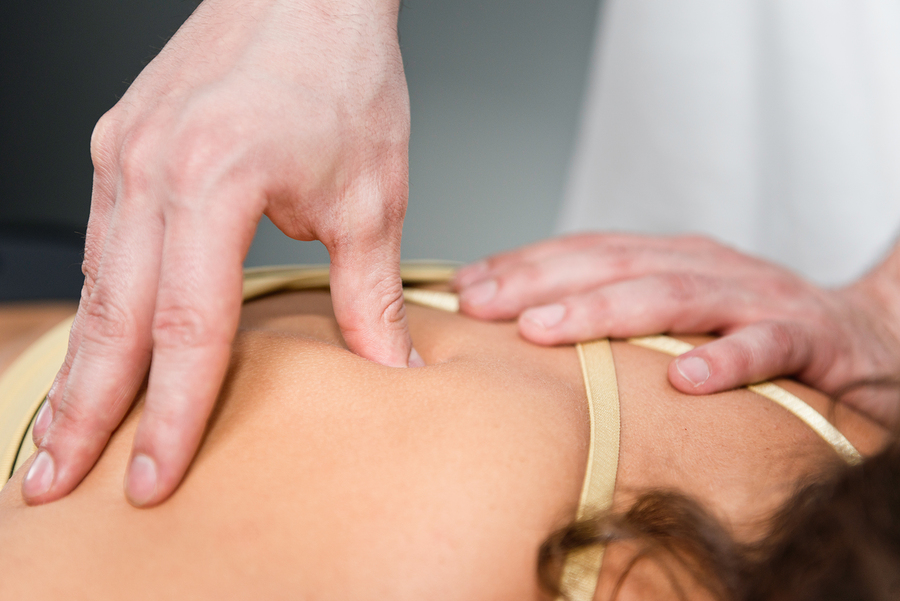Trigger points can affect nearly everyone
Trigger points can affect nearly everyone at some point or another in our lifetime. Physiotherapists will often treat someone afflicted with a trigger point and one question will always come up; what exactly is a trigger point?
A trigger point is a localized, tender spot within the muscle that feels like a nodule, commonly referred to as a knot. This nodule usually occurs from overloading a muscle. Whether this is repetitively in exercise or acutely through a quick movement or lifting a heavy weight. It can even occur from sustained posture or sustained load like a heavy shoulder bag resting for hours on your shoulder. When we use a muscle, the many thousands of fibres within the muscle contract and move closer together and when relaxed. The fibres separate out again into a resting position. When the muscle is overloaded, some of the muscle fibres will stay bunched together creating this tender nodule: the trigger point. Common areas for trigger points include the neck and shoulders, gluteal muscles, and calves.
Types of trigger points
There are several different types of trigger points, the main two being active and latent trigger points (Travell & Simons 1999). A latent trigger point is one that causes some dysfunction, normally stiffness or movement restriction, but is not normally painful unless touched. An active trigger point can also cause dysfunction but with the addition of pain. A painful trigger point can be exacerbated further if the muscle continues to be used, contracting in its shortened position over and over.
Pain associated with a trigger point is often described as an aching pain. It is not normally sharp and localized to one specific spot. Trigger points can also cause some motor function problems. These can include muscle weakness and decreased coordination as it cannot contract and relax through its full range. As the muscle continues to stay in a somewhat contracted state, muscle fatigue is also common symptom. Trigger points can also cause spasms of other muscles or the muscle involved and can often cause referred pain so that the pain can be felt in a different area to the trigger point.
A patient with a trigger point may have a range of findings on assessment due to the differences between latent and active trigger points and their irritability. A patient may present with anywhere from a small, painless restriction in movement to severe pain with a large restriction in range of motion. The patient will also normally report pain when the muscle is on stretch or against resistance. Generally, there will always be some degree of tenderness on palpation of the trigger point and the muscle tissue around the trigger point will normally feel like a taut band.
How to treat trigger points
Trigger points can be treated in several ways including dry needling, gentle muscle stretching, reciprocal inhibition (contracting one muscle to inhibit or relax its opposite muscle), ultrasound, heat, range of motion techniques, massage or trigger point release. Other treatment can include prescriptive medication for muscle relaxation and pain relief and trigger-point injections. Your physiotherapist will help choose the best treatment for you based on your symptoms, presentation and their own clinical reasoning.
Often, your physiotherapist will prescribe you an exercise program that can include range of motion exercises, stretching or using a spikey massage ball for trigger point release. Spikey massage balls are great tools that help improve circulation and allow you to self-massage an area of the body to release tension within smaller muscle groups or a trigger point. This is also a self-controlled exercise meaning you can apply degrees of pressure that you are comfortable with to the affected area, avoiding any excessive pain.
References
Alvarez, D & Rockwell, P (2002). Trigger Points: Diagnosis and Management. Am Fam Physician. 15;65(40:653-661.
Travell, J.G. & Simons, D.G., (1999) Myofascial Pain and Dysfunction: The Trigger Point Manual Volume 1. The Upper Half of Body. Second Edition. Baltimore: Lippincott Williams & Wilkins.

